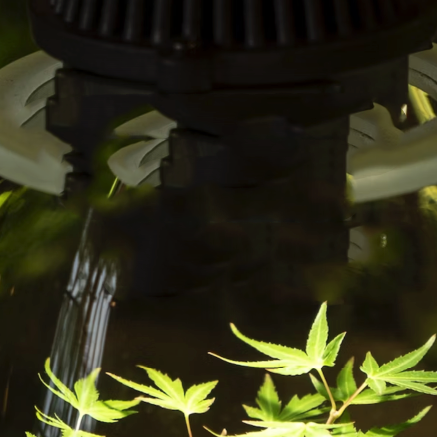The latest LED grow lights outperform traditional HPS grow lights in every way. With cutting-edge fixtures like the Omega Infinity 3.0 Pro delivering an incredible 3.0 micromoles of usable light per watt, growers are achieving record-breaking yields. It's no surprise that LEDs dominate the market for modern grow light systems.
If you're upgrading to LED grow lights, a few small changes to your setup can help you unlock their full potential. Follow these tips to ensure optimal growth and maximise harvests.
Why Choose LED Grow Lights?
Today’s LED grow lights provide numerous advantages over traditional lighting:
- Higher efficiency: LEDs produce up to 50% more usable light per watt, making them the most energy-efficient option available.
- Lower heat output: reduced heat generation minimises cooling requirements and creates a more stable growing environment.
- Full-spectrum light: modern LEDs mimic natural sunlight, supporting plant growth through all stages—from seedling to harvest.
- Durability: with long lifespans, LEDs reduce replacement costs over time.
Whether you’re growing leafy greens, flowers, or high-yield crops, the benefits of LEDs are undeniable. Here’s how to fine-tune your setup for maximum success.
Tips for Optimising LED Grow Light Performance
1) Maintain Ideal Temperatures
LED grow lights generate significantly less heat than HPS or metal halide systems. While this is a major advantage in warmer months, cooler grow rooms may require adjustments. Aim to keep your grow room temperature within the 24–28°C range during lights-on periods.
If temperatures drop too low, reduce airflow rates using a fan speed controller or add a tube heater. For larger spaces, heavier-duty grow room heaters paired with a thermostat can help maintain a consistent climate.
2) Water Less Frequently
LEDs emit less infrared radiation, resulting in reduced evaporation and plant transpiration. This means your soil will retain moisture for longer, and you may need to water less often. However, it's crucial to strike a balance: overwatering can lead to root rot, while underwatering may stress plants.
Perform the "heft test" by lifting your pots to gauge moisture levels. Familiarise yourself with the weight of fully watered versus slightly dry soil to time your watering more accurately. This simple technique ensures healthier root systems and avoids waterlogged conditions.
3) Adjust Nutrient Concentrations
Plants grown under LED lights typically require 25–30% less nutrient concentration than those under HPS systems. The higher efficiency of LEDs enhances photosynthesis, allowing plants to thrive with lower feeding levels.
Use a reliable EC/PPM meter to monitor nutrient strength and avoid overfeeding. Pay close attention to plant health, looking out for signs of overfeeding (burnt leaf tips) or underfeeding (pale or yellowing leaves). Gradually adjust concentrations as needed to maintain balance.
4) Position Lights Correctly
One major advantage of LEDs is their ability to be placed closer to the plant canopy without causing heat damage. Follow the manufacturer's recommended hanging heights, starting with the light raised high for young plants and gradually lowering it as they mature. Always monitor for signs of light stress, such as wilting or bleaching, and make adjustments accordingly.
For easy adjustments, use rope ratchet hangers. These ensure your fixtures are securely positioned and allow for effortless height changes as needed.
5) Monitor Humidity Levels
Lower heat output from LEDs often results in higher relative humidity (RH) levels, as cooler air holds less moisture. High RH can create a breeding ground for mould, mildew, and rot, especially in flowering stages. Keep a hygrometer on hand to monitor conditions closely.
To maintain ideal humidity levels, ensure adequate ventilation and consider investing in a dehumidifier if necessary. Keeping air circulation consistent will prevent stagnant, moisture-laden air from settling around your plants.
6) Boost CO2 Levels for Maximum Yields
One of the most effective ways to capitalise on the increased light intensity of modern LEDs is to supplement your grow room with CO2. Higher CO2 levels enable plants to process light more efficiently, resulting in faster growth and larger yields.
The Mother Nature CO2 Generator is an excellent, hassle-free solution. Key features include:
- Automatic activation at 22°C
- Coverage for spaces up to 1.2m² (5L) or 1.2m x 2.4m (10L)
- A six-month lifespan per refill
With simple setup and minimal maintenance, CO2 supplementation is a game-changer for high-yield grows.
Why LED Grow Lights Are the Future
LED technology has redefined indoor gardening, providing growers with powerful, energy-efficient tools to optimise plant growth. From improved energy savings to increased yields, the advantages are clear.
Ready to upgrade? Explore our full range of LED grow lights and accessories today. Stay connected with us on Facebook and Instagram for updates, tips, and the latest product releases.
Happy Growing!

